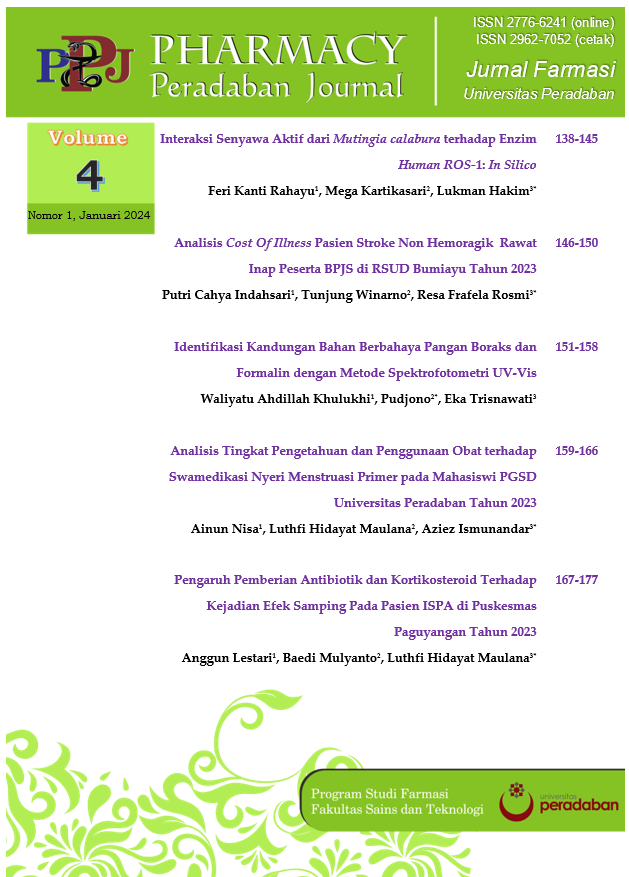Interaksi Senyawa Aktif dari Mutingia calabura terhadap Enzim Human ROS-1: In Silico
DOI:
https://doi.org/10.58436/pharm.pj.v4i1.1799Abstract
Reactive Oxygen Species (ROS) is a by-product of metabolic processes and is a type of free radical. An imbalance in the number of free radicals with the number of endogenous antioxidants produced by the body causes oxidative stress, this situation can cause problems with body cells which can cause various diseases such as cancer, heart disease, cataracts, premature aging, diabetes mellitus, and degenerative diseases. Human ROS-1 is often found in lung cancer cells. Cherry plants (Mutingia calabura) are reported to contain secondary metabolites that have antioxidant activity in vitro. This research focuses on the interaction of compounds in cherry leaves with the Human ROS 1 receptor (PDB ID 3ZBF) using an in silico molecular docking approach. Nine test compounds (active compounds from Mutingia calabura) can bind to the Human ROS-1 enzyme. The two compounds with the lowest energy are compound 50 (-81.6 kcal/mol) and compound 66 (81.5 kcal/mol). Interactions occur through the formation of hydrogen, hydrophobic, and electrostatic bonds.













